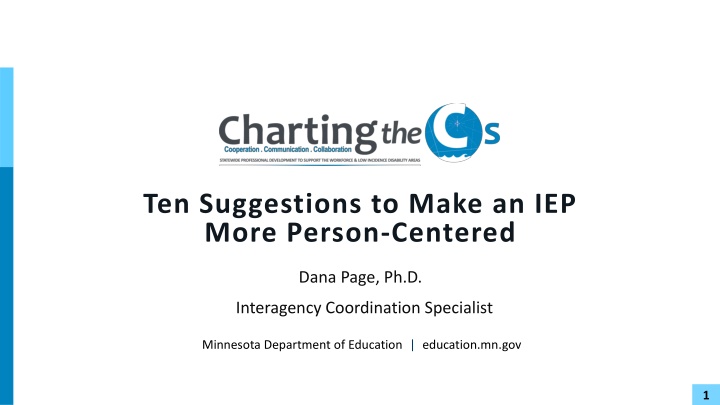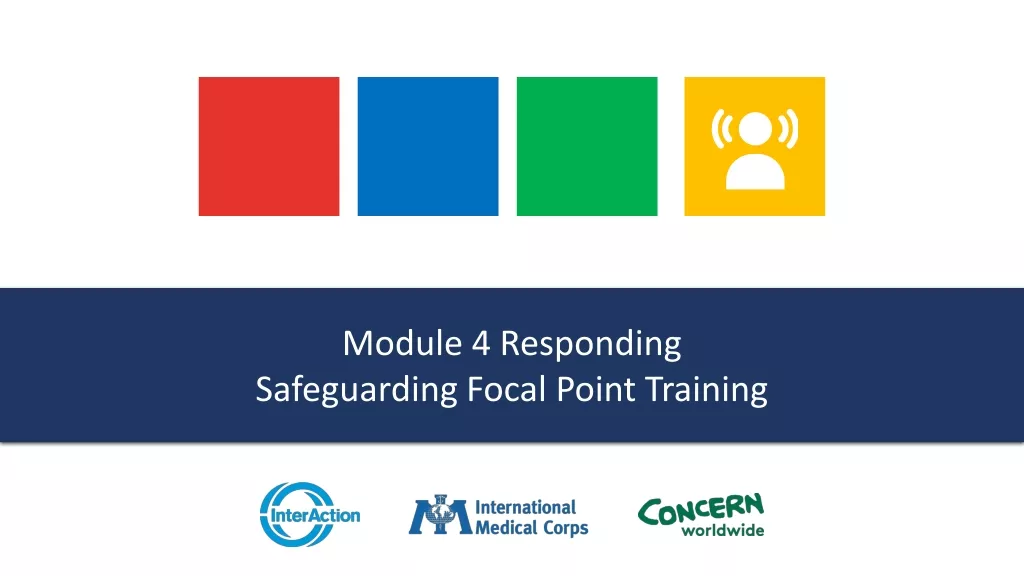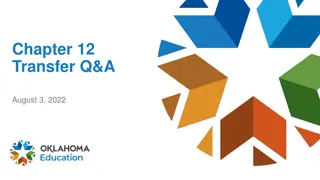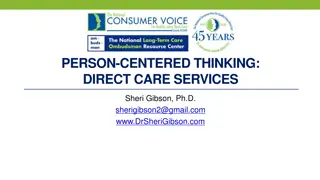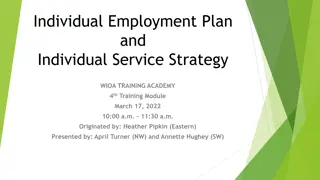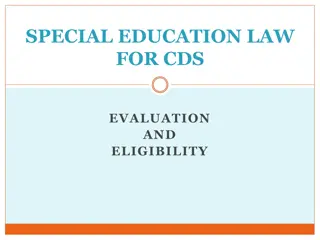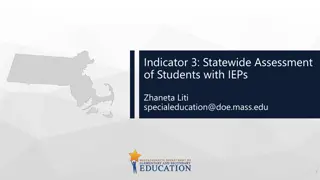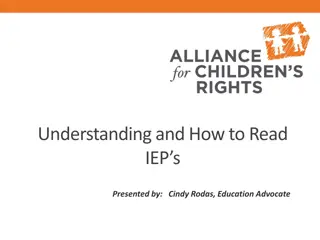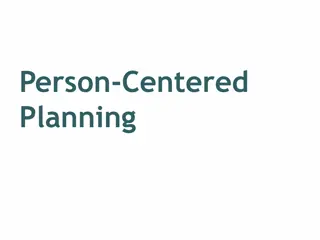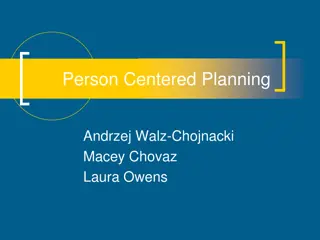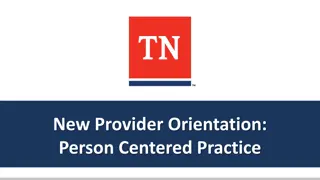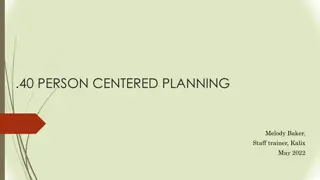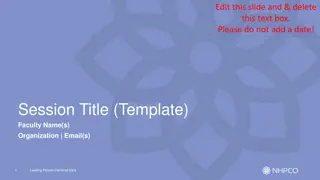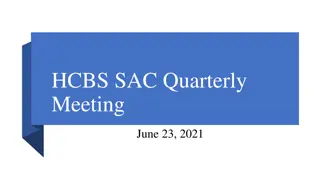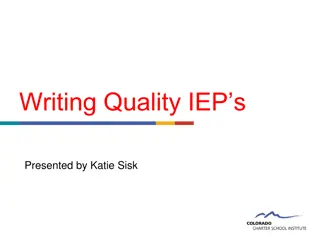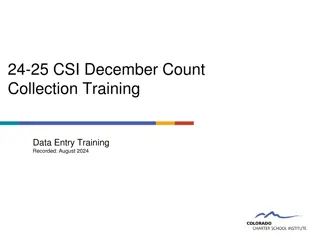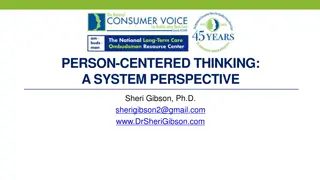Enhancing IEPs with Person-Centered Practices
Explore ten suggestions to make Individualized Education Programs (IEPs) more person-centered, emphasizing student strengths, preferences, and informed choices. Get insights on leadership teams, person-centered practices, and reasons for revising IEP guidelines.
Download Presentation

Please find below an Image/Link to download the presentation.
The content on the website is provided AS IS for your information and personal use only. It may not be sold, licensed, or shared on other websites without obtaining consent from the author.If you encounter any issues during the download, it is possible that the publisher has removed the file from their server.
You are allowed to download the files provided on this website for personal or commercial use, subject to the condition that they are used lawfully. All files are the property of their respective owners.
The content on the website is provided AS IS for your information and personal use only. It may not be sold, licensed, or shared on other websites without obtaining consent from the author.
E N D
Presentation Transcript
Ten Suggestions to Make an IEP More Person-Centered Dana Page, Ph.D. Interagency Coordination Specialist Minnesota Department of Education | education.mn.gov 1
Ten Minnesota Commitments to Equity 1. Prioritize equity. 2. Start from within. 3. Measure what matters. 4. Go local. 5. Follow the money. 6. Start early. 7. Monitor implementation of standards. 8. Value people. 9. Improve conditions for learning. 10. Give students options. * White text indicates highlighted 2
Purpose and Alignment Purpose The purpose of this presentation is to receive feedback on potential revisions to the Ten Suggestions for Adding Person-Centered Features in IEPs. Alignment Federal Duty 5: Advise the State Education Agency SPP/APR Indicator 5: Education in Most Integrated Setting, and SPP/APR Indicator 8: Family Engagement Annual Plan Priority C: Most Integrated Settings 3
Reasons for Revision Since its creation in 2018: Learnings from the COVID era, including more flexible instructional environments, including Online Learning Option Act. Creation of the Equity, Diversity and Inclusion center, and the Minnesota Equity in Action Framework (https://education.mn.gov/MDE/dse/edi/equityact) Technology advances (chat GPT) Updates/amendments that came from most recent legislative session 4
Person-Centered Practices Leadership Team The leadership team focuses on supporting educators to implement person-centered practices that have the following core features: Strengths-based. Person and family-led. Involves people from across home, school, and community. Awareness and sensitivity to issues of race/ethnicity, culture, language, age, sexual orientation, and gender identity. Information about student and family preferences to ensure each team member s preparedness. Informed choice that balances information that is both important to and for the person. 5
Person Centered Practices (PCP) Person-centered practices are strategies and activities that support students and families to have input and make informed choices about everyday life decisions and major transitions. Person-centered practices focus on the interests and needs, emphasizing each person s strengths and dreams rather than weaknesses or deficits. The Individuals with Disabilities Education Act (IDEA) does not require an Individualized Education Program (IEP) to be person-centered, but your team can use person-centered features for best IEP practices. An IEP can be person-centered as it is a written statement of services and collaboration for specialized instruction and programs for a student with a disability that is developed, reviewed, and revised in a meeting. 6
One-Page Description for Dana Page- MDE How to best support/comfort me: direct and clear communication MN Nice ain t it provide feedback challenge me ask don t assume What others like and admire about me: drive/ambition authenticity ability to make connections tenacity with getting things done boldness in addressing DEI issues accountability What s most important to me: my faith God is good my daughter Denise collaboration and follow through with ACTION constant learning, reading, writing, seminars, webinars, conferences Weightlifting balance and self-care 7
Poll 1. How many of you are aware of the Ten Suggestions document? 2. Have you used the Ten Suggestions document before when creating an IEP? 3. Have you, to your knowledge, used any other PCP tools while creating or implementing an IEP? If so, what was your experience? 8
Pre-Planning 1. Ask the family about services being used in home, community or employment Purpose: For student/family to express what he or she desires and to better collect data on interagency services to help support those goals that are culturally relevant and important to the student and his or her family. Suggested Timeframe: As soon as you are aware of student eligibility, a new student on your caseload, or at the beginning of school year. 9
Pre-Planning, continued Ask family and student, then service providers, if they are interested in focusing on an IEP that supports goals important across school, home, community and/or employment, by participating in an interagency person-centered process. Assure that consent to speak with service providers and to share information is obtained. If service providers are interested, find out more about using the Special Education Evaluation Status code MARSS6 for students that are receiving special education services from the school district and services from at least one other public agency identified on a written plan through a coordinated planning process. View Minnesota Statutes, sections 125.A.023 and 125A.027. 10
Pre-Planning, continued 2 Ask IEP team members to begin thinking about what is important to and what is important for the student/family. You can use forms like the ones below to record information: o Sample student IEP input form (available from Minnesota Department of Education (MDE) website). o Sample parent input form (available from MDE website). o Sample Trajectory for Exploring form from Charting the LifeCourse Nexus. 11
Pre-Planning: Coordination 2. Coordinate a date for the annual IEP meeting. Purpose: To ensure participation of all stakeholders. Suggested Timeframe: at least a month before the due date. Invite and encourage all IEP team members/service providers to attend and check with student/family to see if anyone else (e.g., friends or relatives that know the student s preferences and strengths) needs to be added. Solicit input for the meeting agenda from each IEP team member. Send agenda email sample (available on MDE website) to all team members and ask for specific input related to individual agenda items. Include student/family as a CC on the e-mail. 12
Pre-Planning: Collaborate 3. Provide the assessment, evaluation and/or present levels with the family prior to the IEP meeting Purpose: Give student/family an opportunity to review and discuss assessment results to determine any new strengths or needs that have been identified that are important for the student/family. This allows the IEP planning to focus primarily on needs that are important to the student/family. Suggested Timeframe: at least a week before the scheduled IEP meeting. Student/family has the opportunity to prepare for and contribute to the IEP development. 13
Pre-Planning: Agenda 4. Create and disseminate an IEP meeting agenda Purpose: Align the agenda with preferences, strengths, needs and goals of the student/family. Suggested Timeframe: at least a week before the scheduled IEP meeting. Include date, time, location, instructions for finding meeting room, agenda, etc. Use the sample meeting agenda handout. You can use the sample IEP agenda script (both available on MDE website). 14
During The Meeting 5. IEP team member introduction Purpose: To identify members of the team that can support the student/family s hopes and dreams. Suggested Timeframe: at the start of the meeting. Provide a meeting sign-in sheet. Have participants state their name and their role in the IEP meeting. Ask participants that know student well to share what they like and/or admire about the student, and a moment in the past year when they had fun together. Identify facilitator, timekeeper, note taker and person responsible for follow-up and coordination using an agreed-upon document, like the Student Summary Form (available on the MDE website). 15
During The Meeting: Agenda 6. Follow meeting agenda Purpose: To keep everyone on track, and ensure that the student/family have the opportunity to comment and provide input about what is important to them. Suggested Timeframe: during the meeting. Use the agenda (available on MDE website) to facilitate the meeting. 16
During The Meeting: Developing The IEP 7. Plan goals that reflect the desires expressed by student and/or family (for younger children) Purpose: Ownership and personal interest from the student/family to increase the possibility of positive outcomes that are both important to and important for him or her, or his or her family. Suggested Timeframe: During the meeting. Have the student and family share their strengths, visions, priorities (use the family/ individual input forms and or the information from their trajectory). Plan goals that reflect student/family s long-term goals. Be sure that student/family input is visible in the IEP created. 17
During The Meeting: Summary 8. Create document summarizing goals and follow-up actions Purpose: Identifies who is responsible for key activities and supports that were agreed upon by the student, family and his or her team, and prevents misunderstandings, areas where there is not enough support, and areas where there are the potential for duplicative or contradicting efforts. Suggested Timeframe: During the meeting, or within one week after the IEP meeting. Summarize goals and follow-up steps, attach to agency-specific plans and send to participants. Sample Student meeting summary form (available on MDE website). 18
After The Meeting: Evaluation 9. Send IEP meeting evaluation Purpose: Gives input for how to improve future IEP meetings, and address any areas that need a follow-up. Suggested Timeframe: Within one - three days after the IEP meeting (ideally, immediately after the IEP meeting). Send all participants the link or paper copies of meeting evaluation. 19
After The Meeting: Coordination 10. Continue to coordinate Purpose: Will ensure that things are happening according to the plan. Suggested Timeframe: Two times or more during the IEP plan year. Continue communicating across agencies to follow up on IEP meeting summary. You can refer back to the sample Student Summary Form from the meeting (available on MDE website). 20
Small Group Discussions Small Group Instructions: Assign roles: Discussion leader: keep group on task, manage time Recorder: writes the feedback/suggestions Reporter: summarize key highlights to the whole group 20 minutes total to discuss the questions provided in discussion guide. 21
Questions 22
References VI Minnesota Department of Education (2021) Ten Suggestions for Adding Person-Centered Features in Individualized Education Programs (IEPs) Leading for educational excellence and equity, every day for every one. | education.mn.gov 23
Thank you! dana.page@state.mn.us Minnesota Department of Education | education.mn.gov 24
